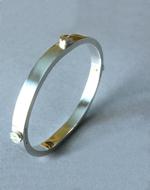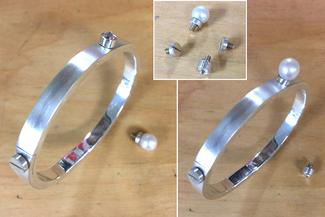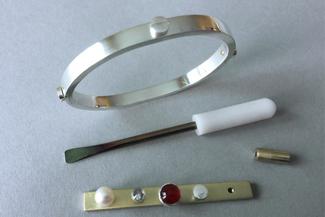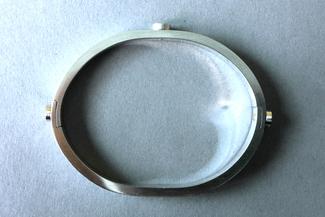Screw It! Tap and Die on a Classic Bracelet
Take your fabrication skills to the next level by learning how to create a tap and die mechanism to create a bangle bracelet with screw closure! This class teaches building a simple bangle bracelet in two halves, approximately 6mm wide, fit close to the wrist and assembled on the wrist with two screws. One or many interchangeable ornaments can be screwed on to the bracelet depending on your design and could include a set stone or pearl, as well as a found object. Concepts and techniques demonstrated during the workshop will include metric and English screw forms, and how to calculate blanks for screws; fabricating screws and proper drilling and tapping for threaded holes. and fabricating a simple bangle with provision for registration of screws. Students will also learn how to create a screwdriver used to open and close the mechanism.
Meet the instructor

Steven Parker is a jeweler, having been trained in the techniques and disciplines of classic fine jewelry. His study of watch and clockmaking led him to a quite enjoyable detour into the world of toy design and manufacture where he invented, prototyped, and manufactured various types of electro-mechanical toys and collectibles over the course of a decade before returning to the jewelry industry. Steven currently works with industry and private clients designing, modeling, and manufacturing jewelry in a wide range of styles and materials. Believing strongly in giving back, Steven also teaches as adjunct in the Jewelry Design Department at FIT in New York City.
Materials & Tools
There is a $85 materials fee for this workshop that is payable upon registration. The materials kit includes 16" of sterling silver rectangle wire, bezel wire, silver rod, steel high speed hand tap, round die, and die holder, and various tools needed to complete the project.
- Emery paper, coarse/medium/fine/polishing
- Emery sticks (suggested from Rio)
- Large hand file, flat, cut 0
- Escapement file: equaling, 5mm wide x 0.6mm thick
Metalwerx has some of these items to share, but students are encouraged to bring their own if they have them or would like to use them exclusively.






